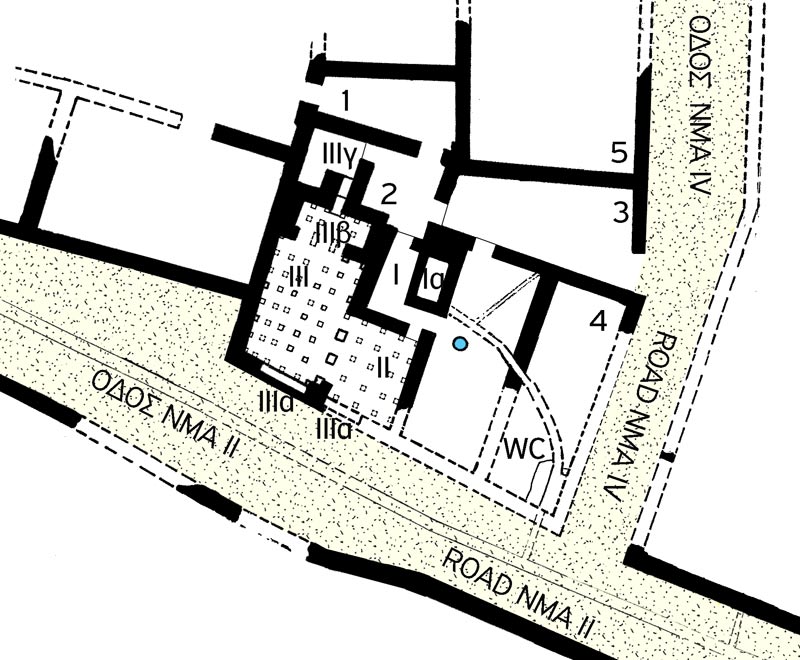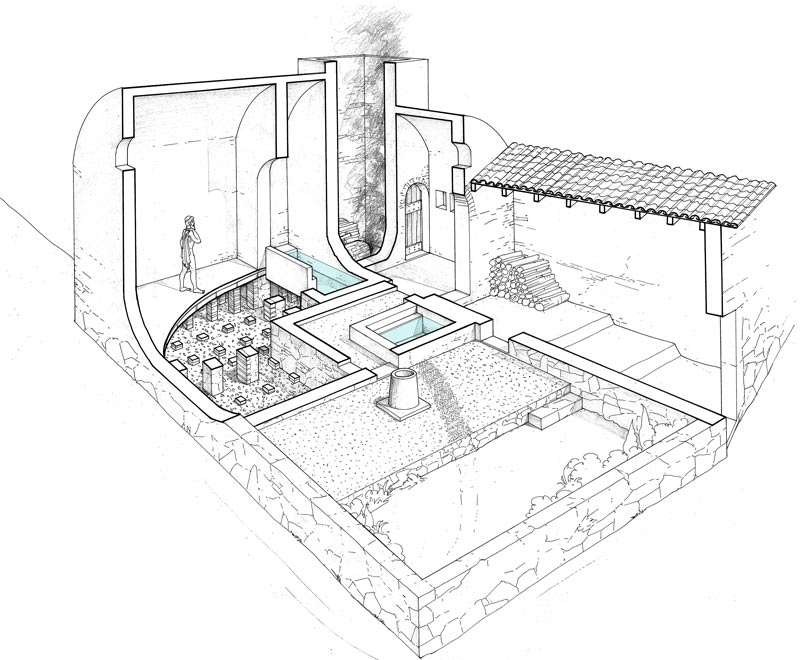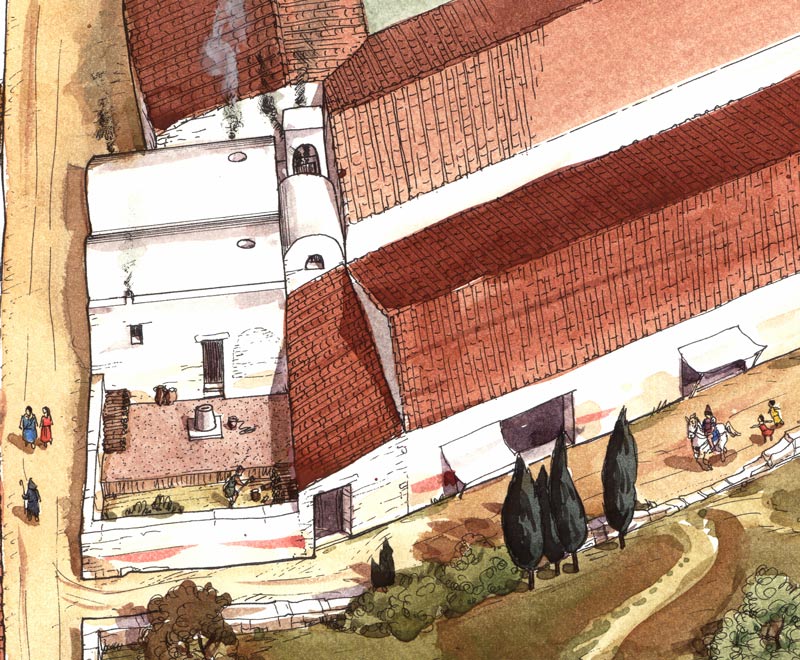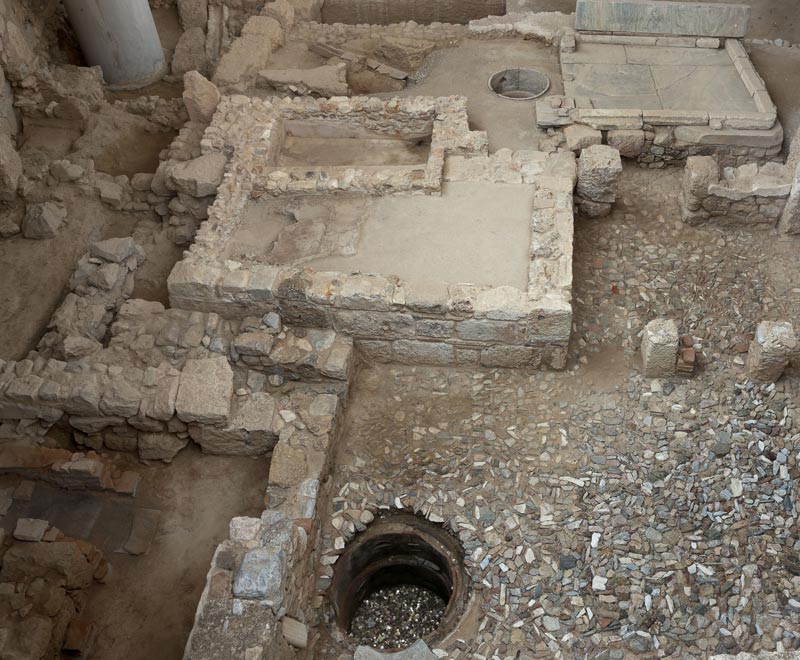THEMATIC SECTION
West Bath
The private baths of the lavish mansions in this neighborhood provide a rare luxury for the few. One of these facilities, the West Bath, is founded in the 2nd cent. AD by the owner of House Ξ. Its remains lie mostly outside the boundaries of the excavation. It is destroyed in the 3rd cent. AD and overbuilt by new rooms during the next stage in the house’s development.
Upon entering the bath complex, visitors leave their clothes in the changing-room, then pass through the cold chamber to enter the warm rooms: firstly, the lukewarm chamber, to adapt the body to heat; then, to the hot room, for a steam bath and a hot soak in a tub-like basin. Afterward, reversing their course, they return to the lukewarm chamber for a massage and a rub-down with aromatic oil; then finish up in the cold chamber, to cleanse their bodies of sweat and unguents and soothe their skin in the cold water basin.
The bath’s heating system is formed between two floorings: an underground one, supporting a series of low posts and the main floor, supported by those posts. Hot air, produced from a hearth beneath the hot bath, circulates throughout the space beneath the main floor, as well as up through gaps left in the walls by a double-wall construction. To protect their feet from heated floor surfaces and puddles of hot water, bathers wore thick-soled shoes.
The bath’s size doesn’t allow its simultaneous usage by people of both genders, and separate days or times were assigned to each one.
The use of your data is described in the privacy settings










